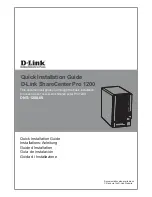
14
Sun Fire X4500 Server Guide for Preinstalled Solaris 10 OS • February 2007
Important Solaris OS Installation and Bootable
Hard Disk Drive Guidelines
Note the following important guidelines when installing the Solaris OS on the Sun
Fire X4500 Server:
The controller number of the bootable disk
differs
depending on the server’s
configuration. For example, the controller number of the bootable disk is set during
installation based on:
■
The number of disks installed
■
The existence of any external USB disk or CD device, including the virtual CD-
ROM and virtual floppy devices supported by the SP
Thus, you must identify the bootable disk
during
the installation procedure.
The Sun Fire X4500 Server comes with six controllers, each supporting up to eight
SATA drives, for a total of 48 SATA drives. Before you reinstall the Solaris OS, you
need to determine the logical device name that corresponds to the two bootable
disks, which is in the form:
c
X
t
Y
d
Z
s
W
where
■
c
X
is the controller (or interface) number, such as c0, c2, c4, and so on. Controller
numbers are logically assigned in sequential order.
■
t
Y
is the target ID of the device, such as t0, t1, t2, and so on up to 7.
■
d
Z
is the device number (also known as the logical unit number (LUN). It reflects
the actual address of the device unit.
Z
is zero (0) for Solaris 10 OS.
■
s
W
is the slice number that represents a slice of a disk. Valid numbers are 0 to 7.
To determine the bootable disk, use the command
cfgadm
as described below. The
cfgadm
command provides configuration administration operations on dynamically
reconfigurable hardware resources. For more information this command, see the
man page.





































